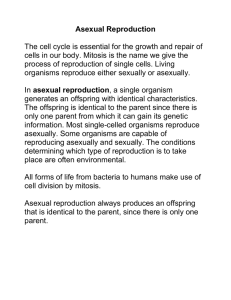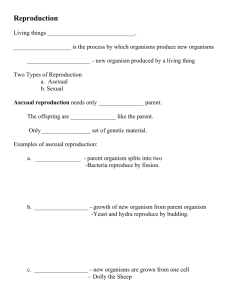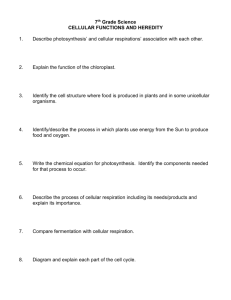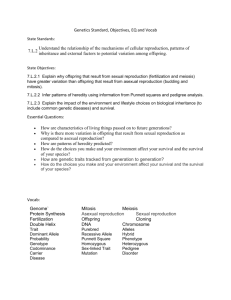4-2 outline answers asexual reproduction
advertisement
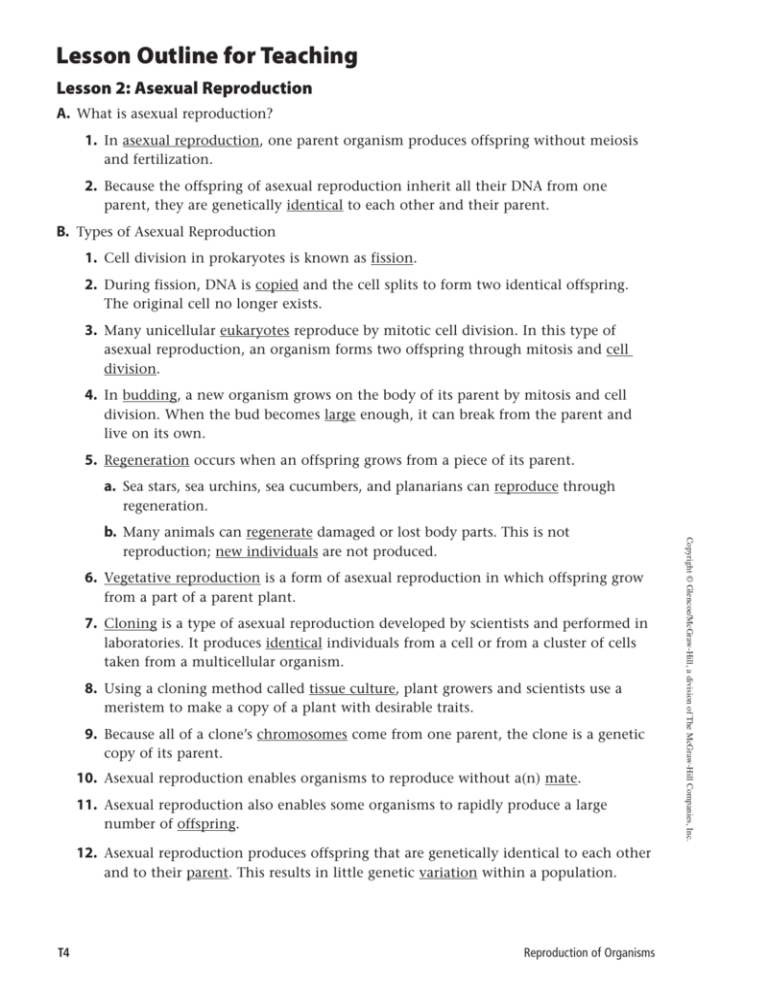
Lesson Outline for Teaching Lesson 2: Asexual Reproduction A. What is asexual reproduction? 1. In asexual reproduction, one parent organism produces offspring without meiosis and fertilization. 2. Because the offspring of asexual reproduction inherit all their DNA from one parent, they are genetically identical to each other and their parent. B. Types of Asexual Reproduction 1. Cell division in prokaryotes is known as fission. 2. During fission, DNA is copied and the cell splits to form two identical offspring. The original cell no longer exists. 3. Many unicellular eukaryotes reproduce by mitotic cell division. In this type of asexual reproduction, an organism forms two offspring through mitosis and cell division. 4. In budding, a new organism grows on the body of its parent by mitosis and cell division. When the bud becomes large enough, it can break from the parent and live on its own. 5. Regeneration occurs when an offspring grows from a piece of its parent. a. Sea stars, sea urchins, sea cucumbers, and planarians can reproduce through regeneration. reproduction; new individuals are not produced. 6. Vegetative reproduction is a form of asexual reproduction in which offspring grow from a part of a parent plant. 7. Cloning is a type of asexual reproduction developed by scientists and performed in laboratories. It produces identical individuals from a cell or from a cluster of cells taken from a multicellular organism. 8. Using a cloning method called tissue culture, plant growers and scientists use a meristem to make a copy of a plant with desirable traits. 9. Because all of a clone’s chromosomes come from one parent, the clone is a genetic copy of its parent. 10. Asexual reproduction enables organisms to reproduce without a(n) mate. 11. Asexual reproduction also enables some organisms to rapidly produce a large number of offspring. 12. Asexual reproduction produces offspring that are genetically identical to each other and to their parent. This results in little genetic variation within a population. T4 Reproduction of Organisms Copyright © Glencoe/McGraw-Hill, a division of The McGraw-Hill Companies, Inc. b. Many animals can regenerate damaged or lost body parts. This is not Lesson Outline continued 13. Genetic variation is important because it can increase an organism’s chance of surviving if the environment changes. 14. Genetic changes, called mutations, can occur and then be passed to offspring; this can affect the offspring’s ability to survive. Discussion Question How can a plant be cloned without laboratory equipment? Copyright © Glencoe/McGraw-Hill, a division of The McGraw-Hill Companies, Inc. Take a piece of the plant and plant it in soil so the piece grows as a new plant. Reproduction of Organisms T5
